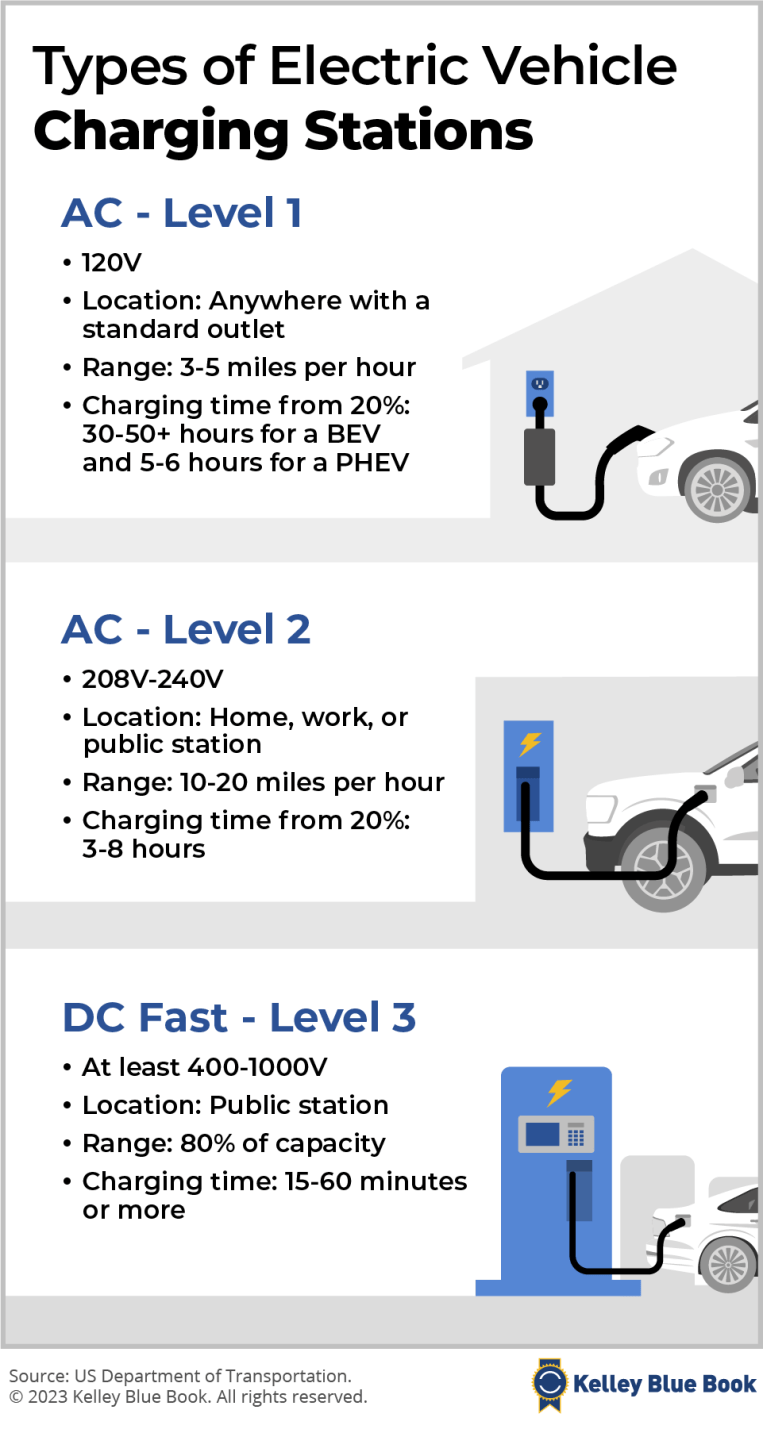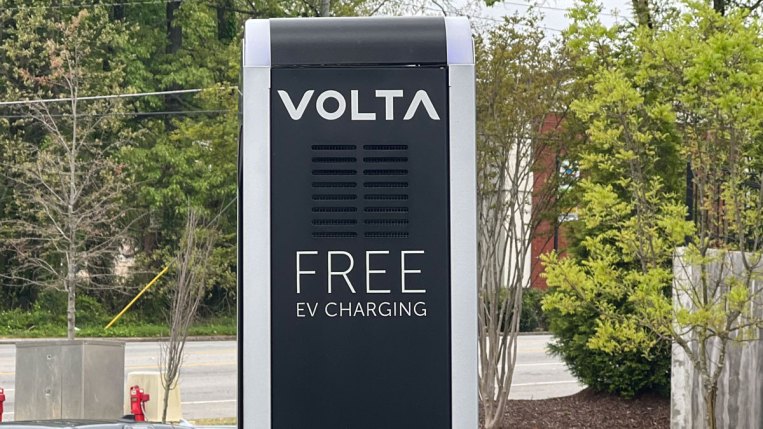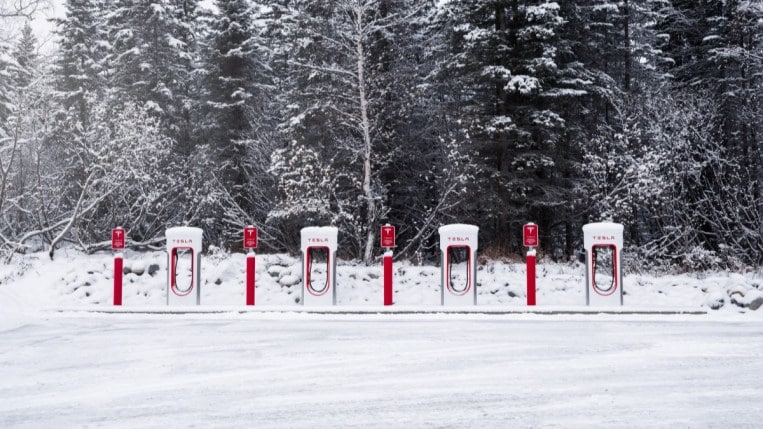Quick Facts About Best Places to Charge
- Electric cars can be charged at home, workplaces, and public charging stations, with home charging being the most common and cost-effective option for EV owners.
- EV charging has three categories: Level 1 (slowest, using standard wall outlets), Level 2 (faster, often used at workplaces or shopping centers), and Level 3 DC fast chargers (fastest, ideal for road trips but not for daily use).
- Private investment in charging networks continues, while Tesla’s Supercharger network is opening to other brands, with adapters bridging compatibility gaps between charging systems.
One of the biggest hesitations for prospective electric vehicle (EV) buyers is where they will charge their cars. Unlike plentiful gas stations, there are far fewer EV charging stations, and they are more spread out. When going on long trips, drivers of electric cars must plan their routes before hitting the road.
You’ll also find many different public charging options, so you’ll need to download several apps and get it all straight. Then, some electric cars, like the Nissan Leaf, work with specific chargers. Keep reading to learn where to charge your electric vehicle and what to do if your car isn’t compatible with every charger.
Where to Charge Your Electric Car


The best place to charge your vehicle is at home. However, you can charge your car at public charging stations at grocery stores, along highways, public transit stations, office buildings, and more. Charging stations continue to pop up across the United States. The U.S. Department of Energy’s Alternative Fuels Data Center reports that electric vehicles can fast charge at more than 12,000 public Level 3 DC fast charging stations.
Electric vehicle chargers could soon be around the corner, even at gas stations. BP and Shell have already announced ambitious plans and investments in electric charging stations. For example, Shell USA acquired Volta and its network of 3,000 charge points at malls, shopping centers, and grocery stores like Whole Foods. Meanwhile, eight of the world’s largest automakers teamed up to announce a coast-to-coast charging network, called IONNA.


There are plenty of options to choose from when deciding where to charge your electric car.
Home
The easiest and best place to charge your electric car is at home. Some studies show that 80% of EV owners charge their cars at home. At-home charging is one of the cheapest ways to charge an EV. Many states, cities, local municipalities, and electric utility companies offer rebates and incentives for charging at home. If you live in an apartment complex, check with the manager. Oftentimes, they want to add amenities and perks for residents, and an EV charger may be among them.
MORE: How Much Does It Cost to Charge an Electric Car?
Level 1
Most electric cars come with a Level 1 charger that works with a standard household outlet. While this is the slowest way to charge an electric vehicle, it eventually gets the job done. Level 1 could be enough if the owner doesn’t drive often.
Level 2
If you don’t mind paying a little extra, you can upgrade to a Level 2 charger. Most car manufacturers offer a Level 2 charger as an upgrade and may even provide free installation. Level 2 uses the same current as a household clothes dryer.
RELATED: How Long Does It Take to Charge an Electric Car?
Workplace Charging
Many companies have installed charging stations for employees to use while at the office. These chargers tend to be Level 2 chargers, which give your car a faster charge in fewer hours than Level 1 charging using a standard wall outlet.
It’s an excellent place to charge your vehicle during the workday. A charger at work should allow you to get to and from work, and then some. Just remember your charging etiquette and share it with your co-workers.
Public Charging
Public charging stations might seem intimidating if it’s your first time charging an EV, as they can sometimes be unreliable, charge at different speeds, and more. You’ll occasionally find broken chargers and sometimes another electric car hogging the spot overnight. But most times, you’ll see public charging stations conveniently located in places where you run errands, at public transit sites, and in shopping areas like some supermarkets, Walmart, and Target store locations.
Public charging stations are usually Levels 2 or 3 chargers, meaning they provide the most energy to your car in the shortest amount of time. These chargers come in handy when going on a long drive. They are also great when your car has a depleted battery and needs a quick charge to make it home. Since public Level 3 DC fast chargers can provide you with up to 80% battery charge in about 15 to 30 minutes in some vehicles, by the time you make a pit stop to buy coffee and a few snacks, you’ll be ready to hit the road again.
However, while Level 3 DC fast chargers work for quick charging while on longer trips or when you run low while out and about, they should not be your go-to for everyday use. When used too frequently, DC fast chargers can damage the car’s battery, potentially doing more harm than good. It’s also advised to fast-charge up to 80% capacity and not to let the battery drain below 20%.
MORE: Electric Car Range: Everything You Need to Know
What About Tesla Charging?


Tesla vehicles can use the company’s robust and reliable Supercharger network to recharge when away from home. The type of charging port on a Tesla is known as North American Charging Standard, or NACS. Most other manufacturers have used a different connector type, the Combined Charging System, or CCS. Until recently, Tesla’s proprietary Supercharger network was once reserved only for its cars. Other EV drivers used a patchwork of smaller charging networks serving cars with CCS or the few models using CHAdeMO plugs.
Most EV charging is done at home, so this wasn’t a tremendous burden for many drivers, but it did limit their road trip recharging opportunities.
Last year, Ford and Tesla reached an agreement allowing Ford to build NACS plugs into its future EVs and let Ford drivers use Superchargers. Other automakers followed soon after.
Tesla agreed to let other charging networks build the NACS connector into their chargers. It’s taking time for Tesla to reprogram its system to work with each brand. By 2026, most EV owners will be able to recharge at Superchargers, and most new EVs will come with a built-in NACS port.
Meanwhile, EVs with a CCS port need an adapter to use Superchargers. Similarly, an adapter is needed to charge a Tesla at a public station that isn’t a Supercharger site.
Editor’s Note: This article has been updated since its initial publication.

